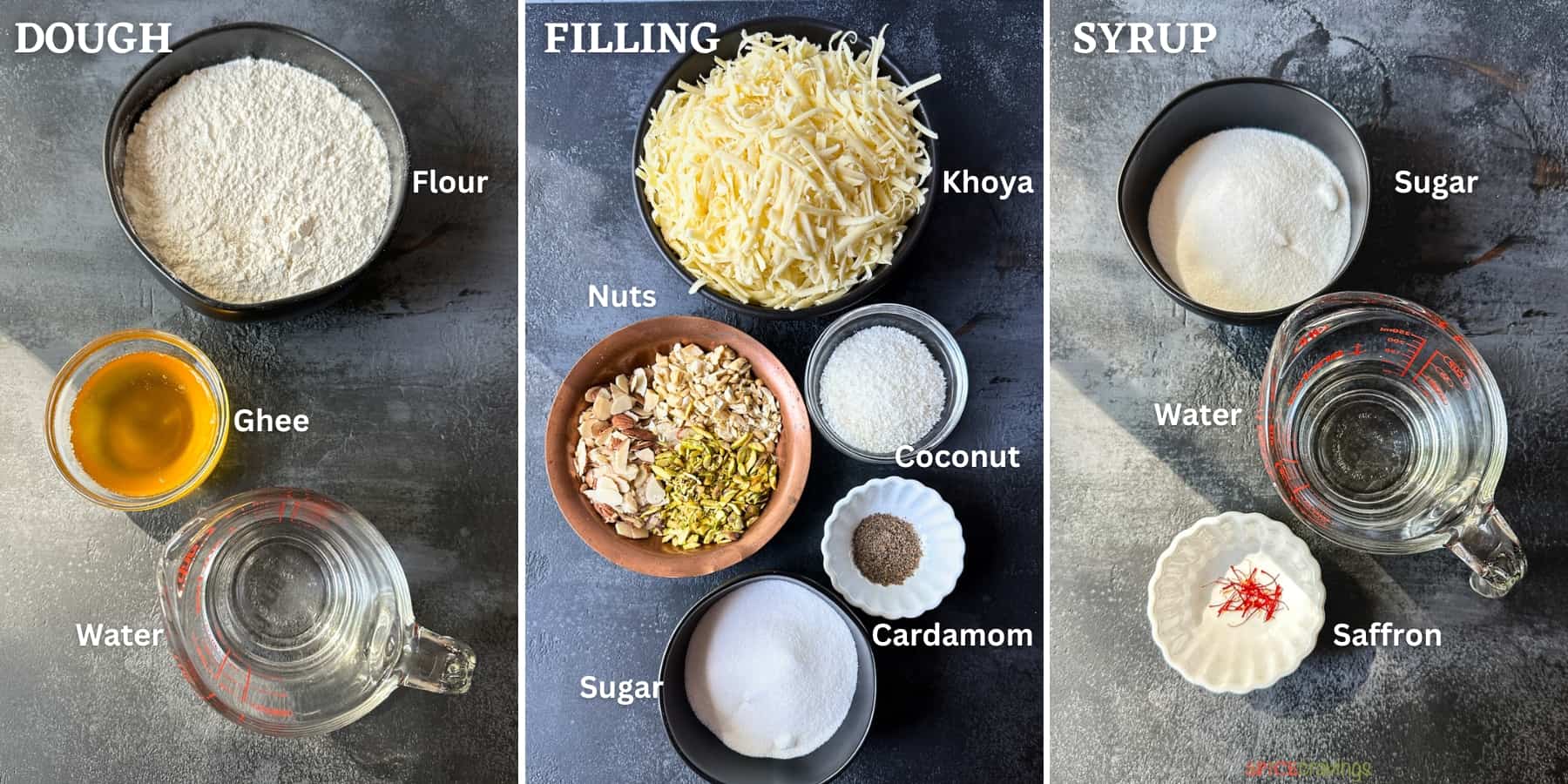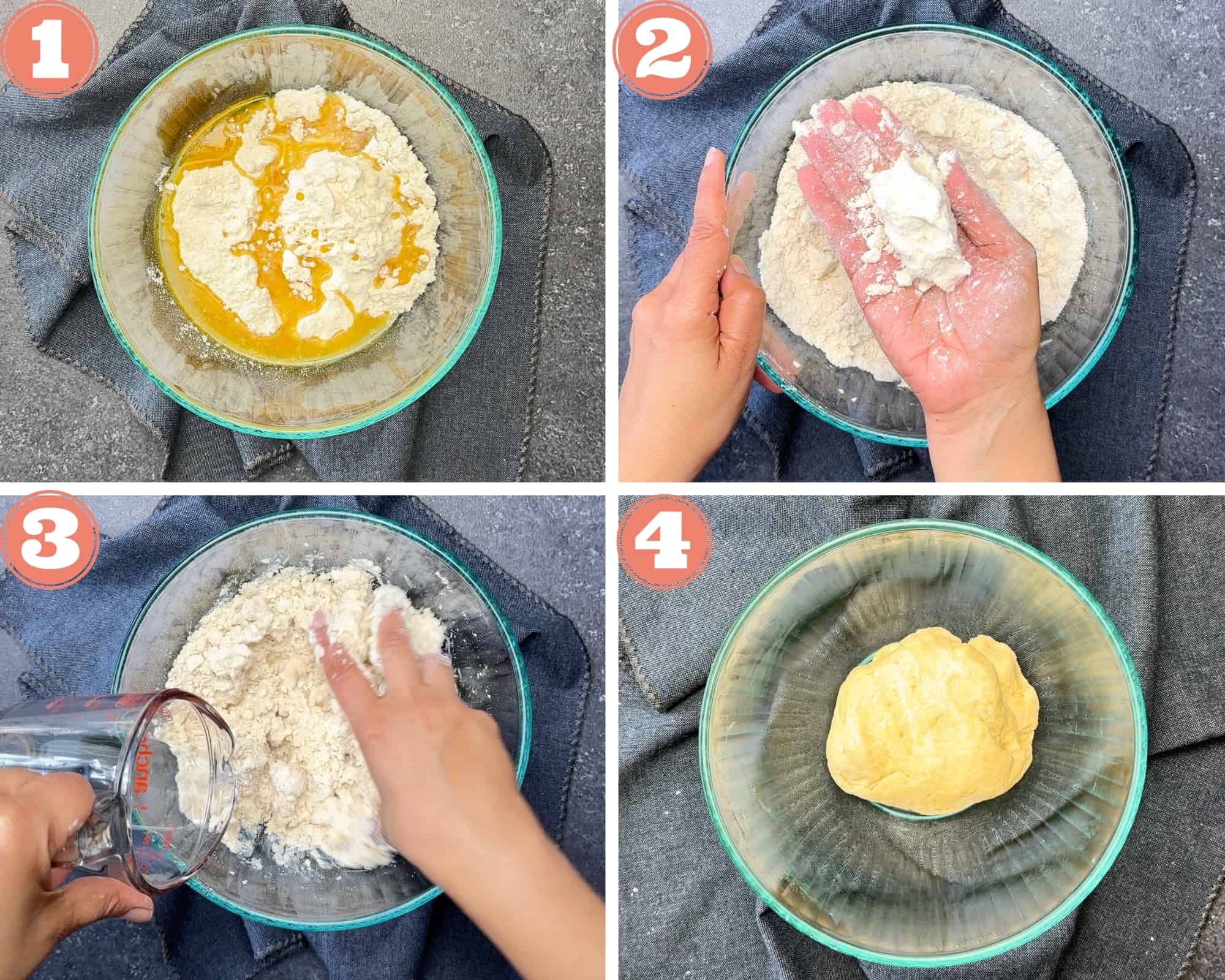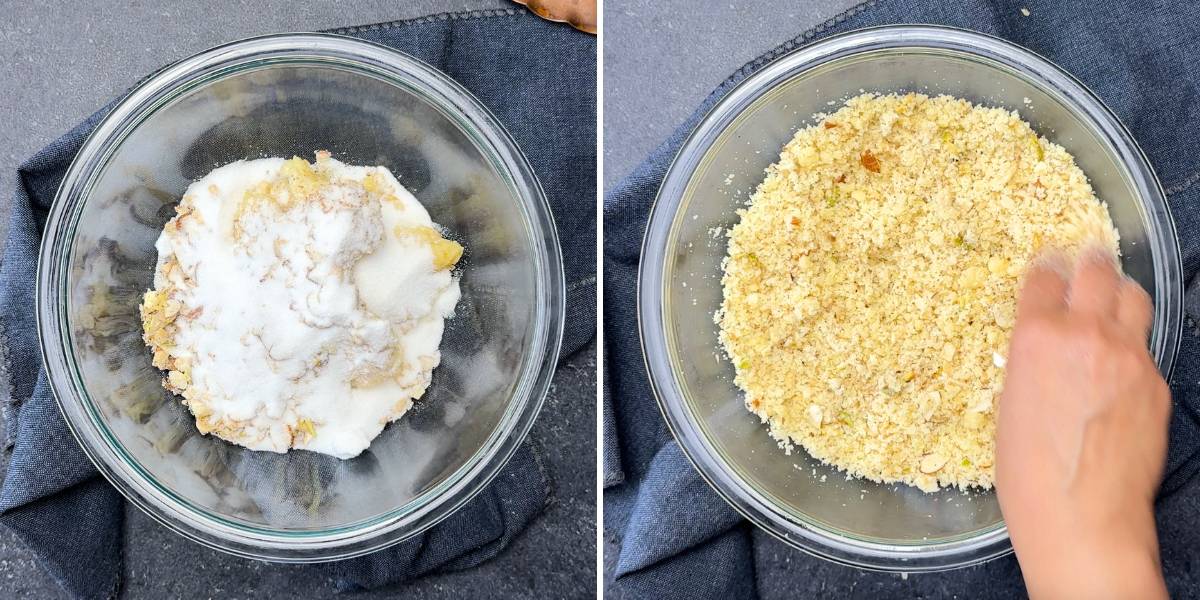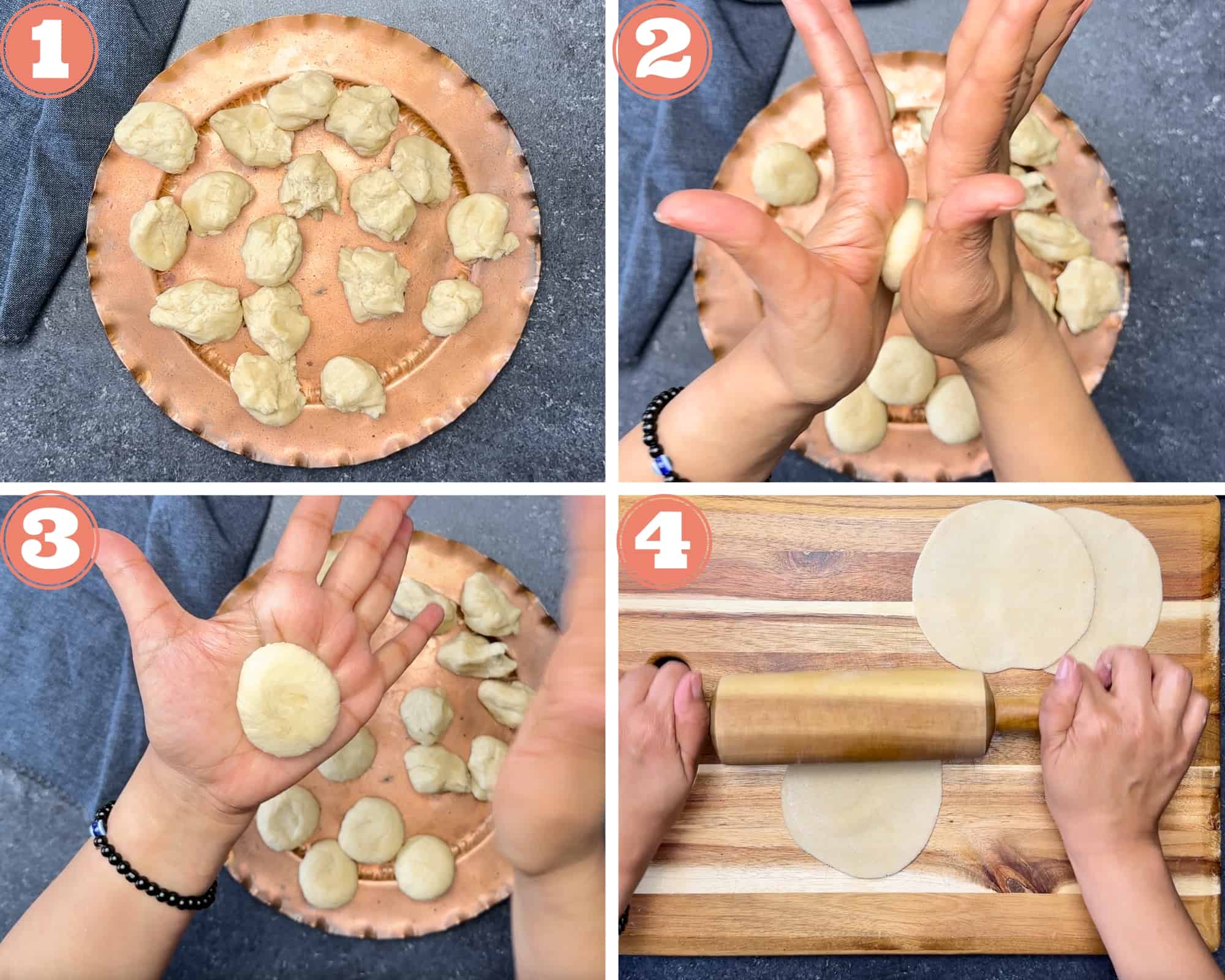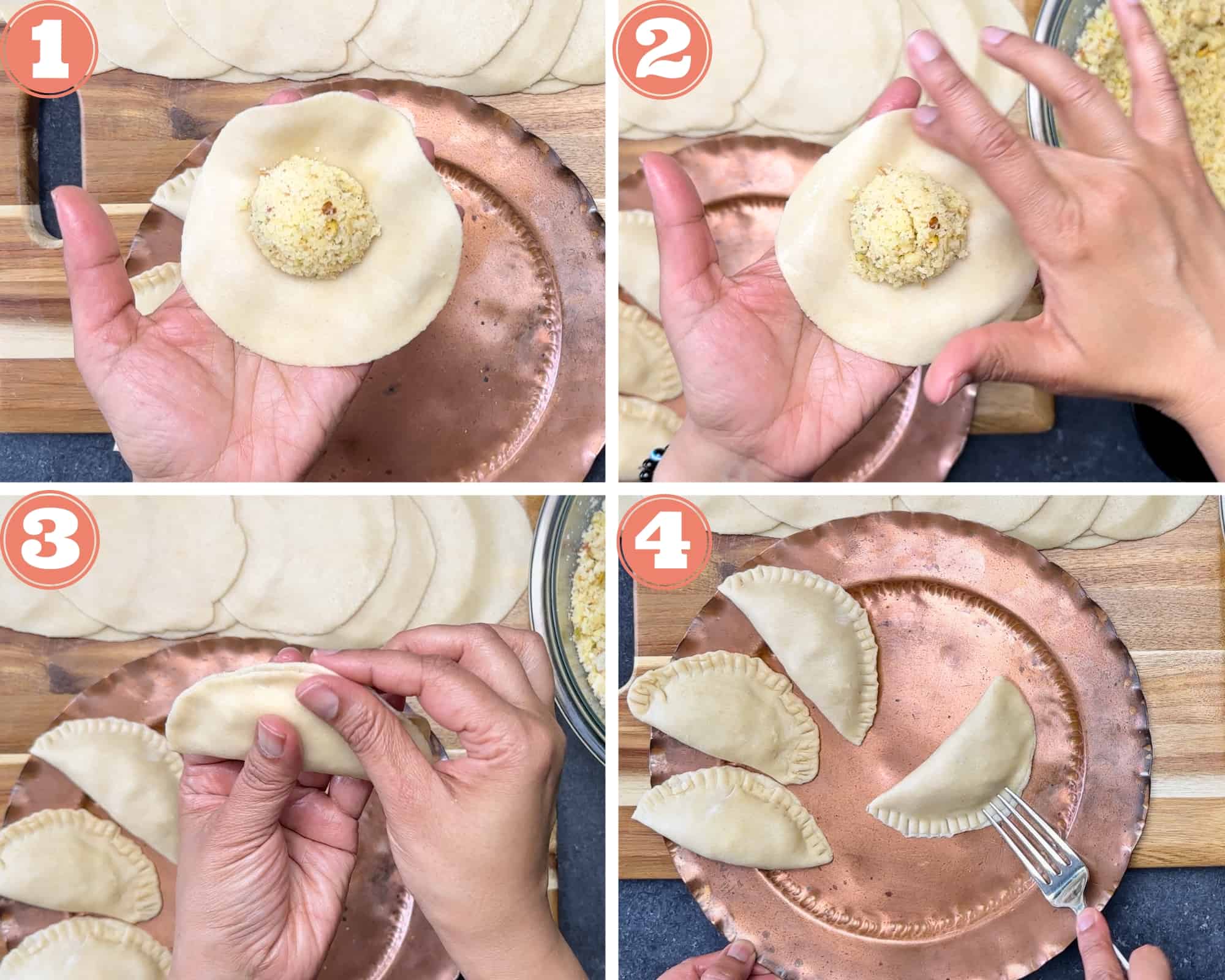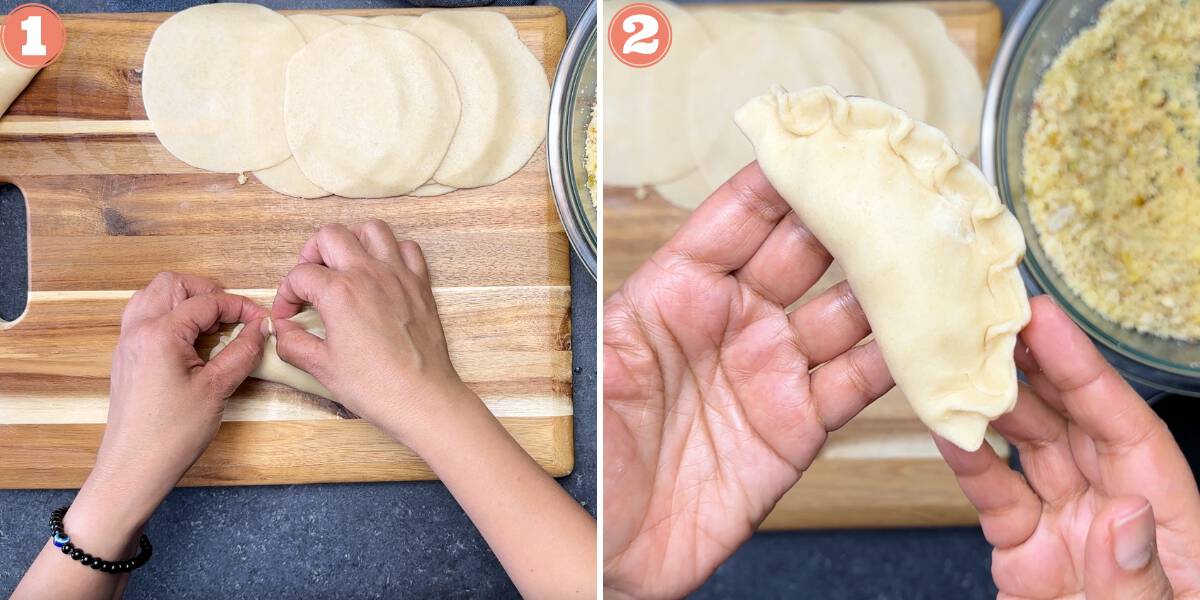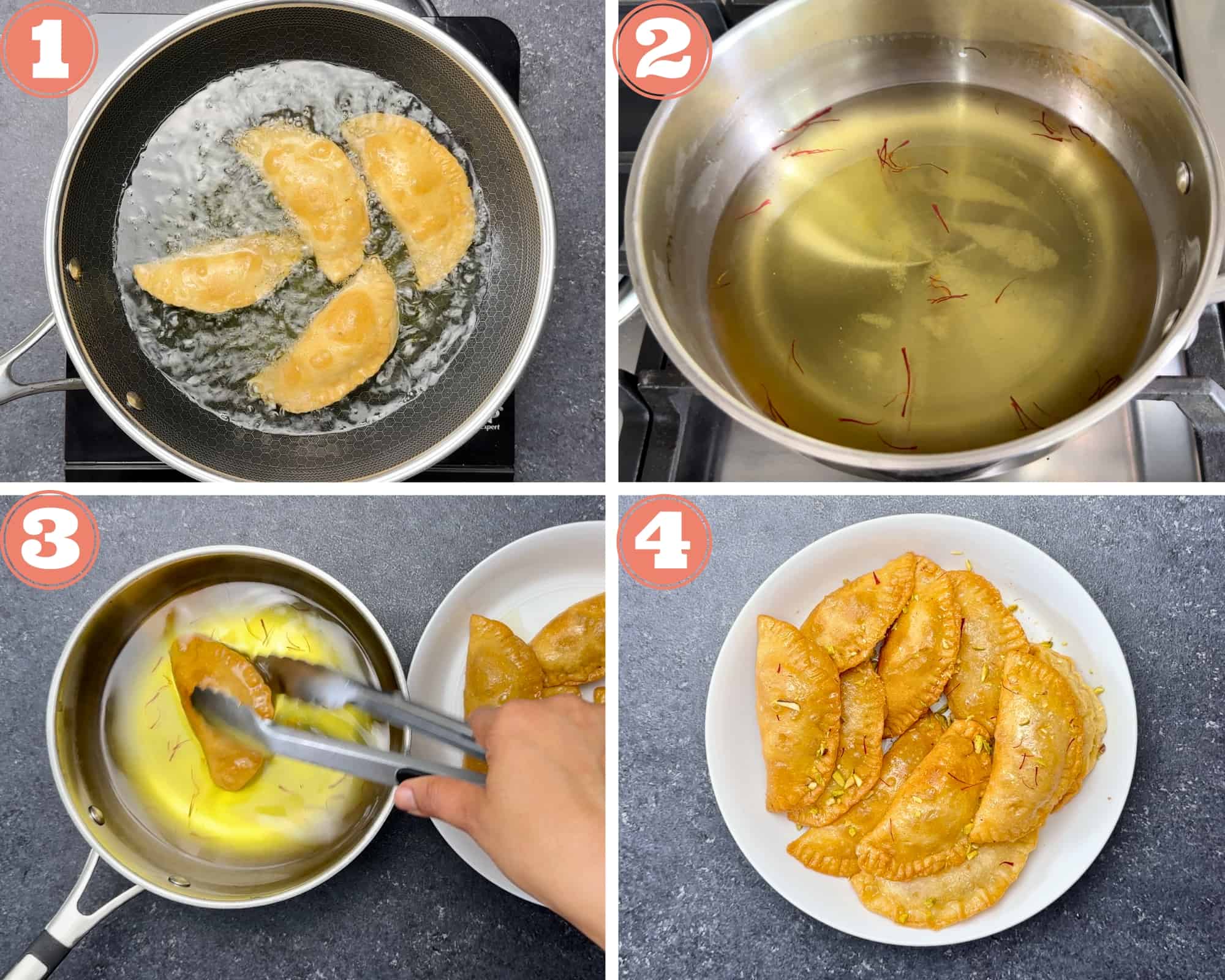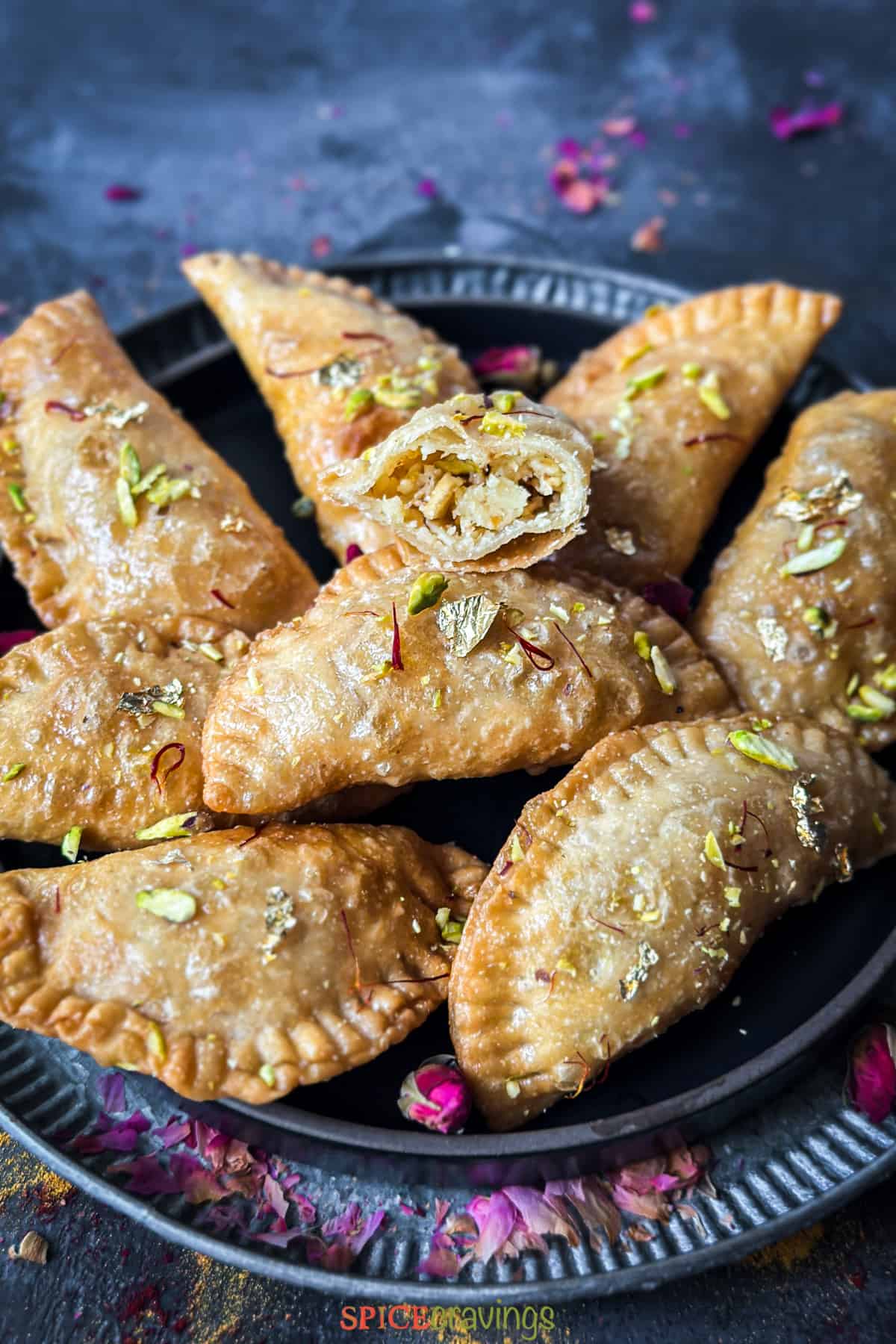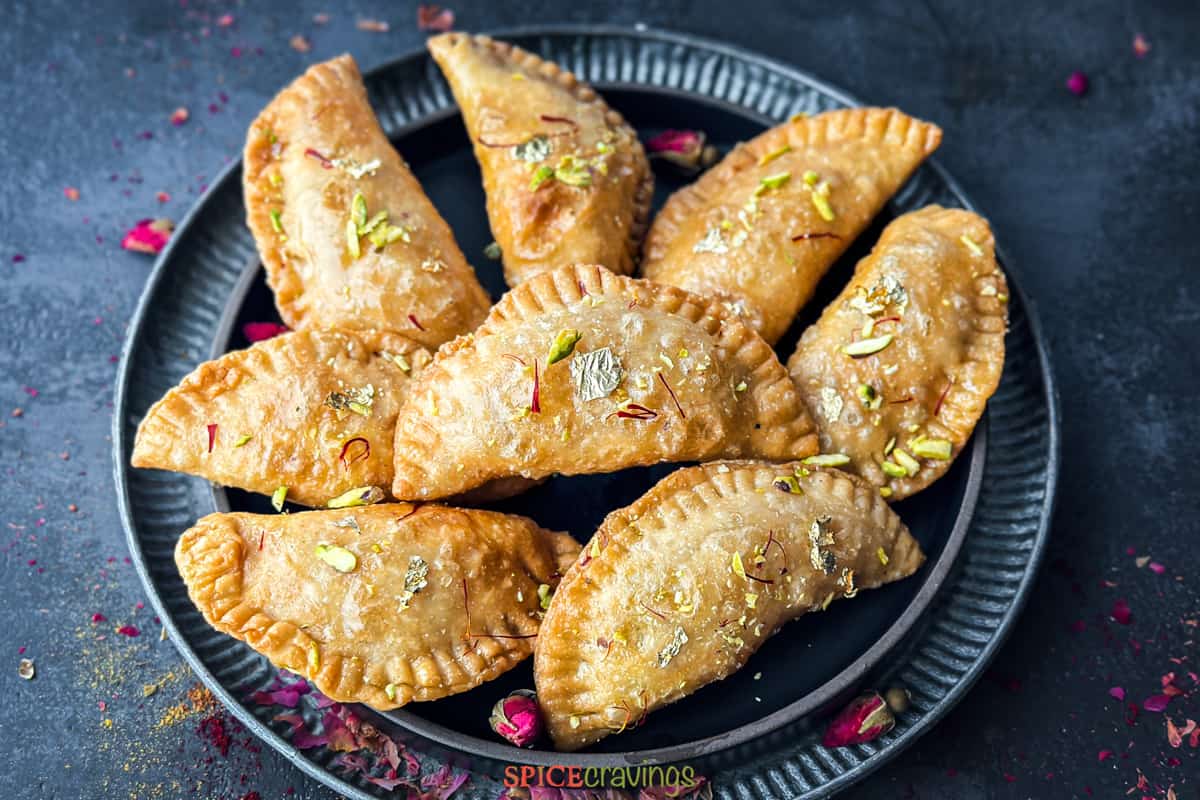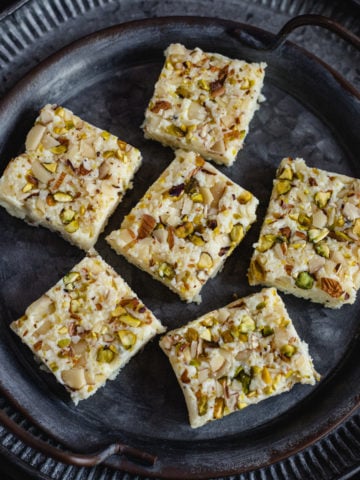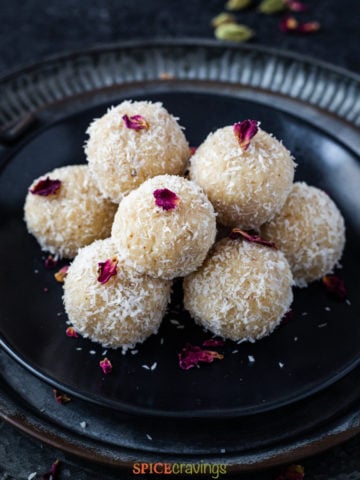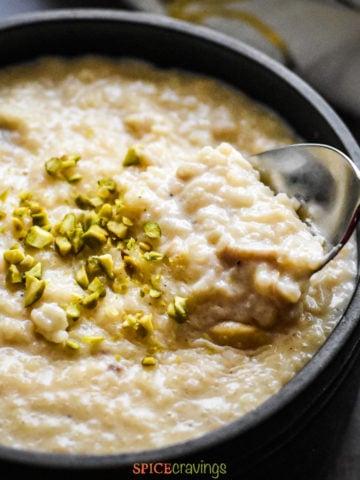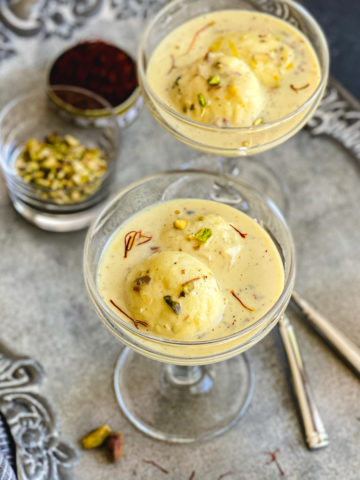Today’s recipe blends sweet nostalgia and the taste of tradition! My mother-in-law used to make gujiya from scratch every Holi and Diwali, and this is my tribute to her family-famous recipe.
It’s a bit more work than my baked Gujiya recipe that so many of you enjoy, but I promise, it’s worth it! A crispy exterior and sweet, aromatic filling make it a delightful addition to any dessert spread. Gujiya is made by preparing a flaky pastry dough, which is then filled with a mixture of sweetened khoya, coconut, nuts, and aromatic spices like cardamom. I shape them into traditional crescent or half-moon shapes and deep-fry them until golden brown and crispy. To take this treat to another level, I coat the fried gujiyas with a thin sugar glaze or dust them with powdered sugar. Think of them as Indian dessert empanadas! Its crispy exterior, creamy filling, and delightful sweetness make it a beloved treat for festive occasions. Let’s get started on this amazing recipe!
Ingredients - Notes & Substitutions
You can find all the Gujiya ingredients in the baking aisle of any Indian store, or online. Quality is key in this recipe, so pick the best quality ingredients. Scroll down to the recipe card for quantities.
All-Purpose Flour: The base of the dough, provides structure and texture. You can substitute it with whole wheat flour for a healthier twist, but the gujiya may not be as crisp. Suji (fine semolina): A tiny quantity makes the exterior extra crispy. If you don’t have it on hand, substitute with all-purpose flour. Ghee: Adds richness and enhances the flavor of the dough. I use homemade ghee for the best results. Substitute with unsalted butter or olive oil if ghee is unavailable. Water: Binds the dough together and adds moisture. We also need water for the sugar syrup. Sweetened Khoya (Mawa): Khoya, or Mawa, is dried milk solids. It is available in the freezer aisle of your local Indian food store, right next to the Paneer. You can also follow this easy recipe and make khoya using ricotta cheese. Granulated Sugar: Sweetens the filling and keeps it moist. The quantity mentioned in this recipe results in a moderate sweetness. You can add another tablespoon or so for a sweeter taste. We also need sugar for the sweet glaze. Nuts & coconut: Enhance the richness and flavor of the mawa filling with chopped almonds, cashews, pistachios, and desiccated coconut. You can also add dry fruits like chopped raisins or dates. Cardamom: Adds a sweet aroma and flavor. I highly recommend homemade cardamom powder in this recipe. Saffron: Just a pinch goes a long way to infuse the sugar syrup with a sweet, floral flavor.
How To Make Gujiya
Here are the step-by-step photos and instructions for the Mawa Gujiya recipe:
Step 1: Prepare Dough
Gadget Tip: You can make the dough in a food processor using the dough attachment.
Step 2: Prepare Filling
Prep: Grate the khoya using the large holes on a box grater. You can also pulse khoya chunks in the food processor till they break down into tiny pieces. Cool it for 10 minutes then combine it with the nuts and coconut mixture. Mix thoroughly until well combined. Your mawa filling is ready.
Step 3: Roll Dough
Step 4: Assemble Gujiya
Alternatively, pinch the dough between two fingers for a traditional crimped edge. Repeat that process and make the other Gujias. My preference: I prefer using the fork to crimp the edges since it’s faster and easier for me. So use whichever method you find easy, the results will be the same!
Step 5: Fry & Glaze
Heat a deep pan over medium heat and pour in oil until it reaches a depth of about 2 inches. Heat for about 10 minutes. Now test the temperature of the oil.
How To Serve Gujiya
Gujiya can be enjoyed as a snack or dessert. Serve it warm or cool, as you wish. I enjoy it with a cup of ginger tea or masala chai. If it stays at the bottom for longer, the oil needs another 2-3 minutes to heat. If it floats to the top immediately, the oil is too hot and needs to be cooled for 2-3 minutes. If you don’t wish to make the sugar glaze, simply dust them with powdered sugar and enjoy. For festive gatherings, I like to serve gujiya with homemade rabdi in dessert cups.
How To Store & Freeze
Gujiya can be stored at room temperature for up to 3 days. Let them cool to room temperature then place them in an airtight container. Place a parchment liner between each layer, so they maintain their crispness. You can also freeze any excess Gujiya and enjoy them for up to 1 month. Cool completely then place them on a baking sheet in a single layer. Place the baking sheet in the freezer and freeze the Gujiya until firm, for about 1 hour. Once frozen, transfer the Gujiya to a labeled and dated freezer-safe bag. To reuse, thaw out the desired quality in the refrigerator overnight. Enjoy it cold, or air fry it at 350 degrees F for 2 minutes to make it crisp again.
Recipe Tips & Notes
Popular Traditional Indian Desserts
📖 Recipe



